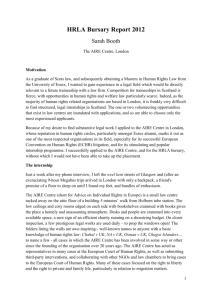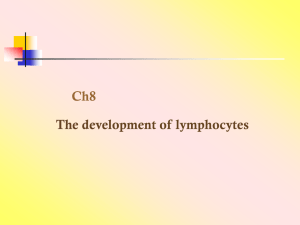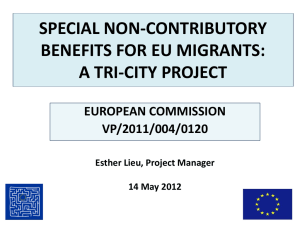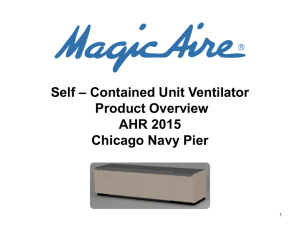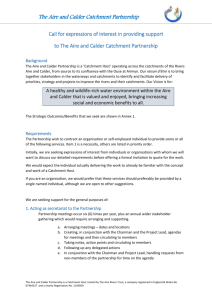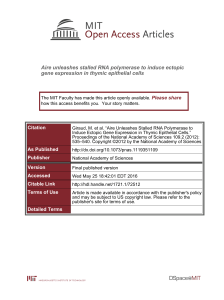Sabbatical Report Dr. Eileen McMahon McQuade Associate
advertisement
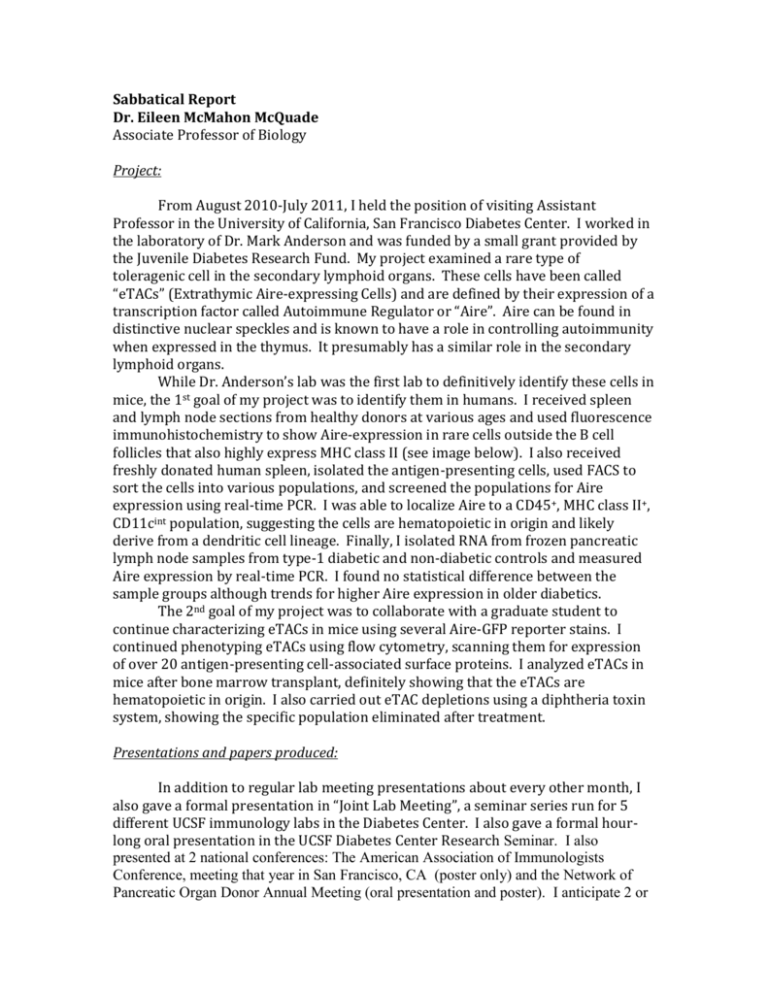
Sabbatical Report Dr. Eileen McMahon McQuade Associate Professor of Biology Project: From August 2010-July 2011, I held the position of visiting Assistant Professor in the University of California, San Francisco Diabetes Center. I worked in the laboratory of Dr. Mark Anderson and was funded by a small grant provided by the Juvenile Diabetes Research Fund. My project examined a rare type of toleragenic cell in the secondary lymphoid organs. These cells have been called “eTACs” (Extrathymic Aire-expressing Cells) and are defined by their expression of a transcription factor called Autoimmune Regulator or “Aire”. Aire can be found in distinctive nuclear speckles and is known to have a role in controlling autoimmunity when expressed in the thymus. It presumably has a similar role in the secondary lymphoid organs. While Dr. Anderson’s lab was the first lab to definitively identify these cells in mice, the 1st goal of my project was to identify them in humans. I received spleen and lymph node sections from healthy donors at various ages and used fluorescence immunohistochemistry to show Aire-expression in rare cells outside the B cell follicles that also highly express MHC class II (see image below). I also received freshly donated human spleen, isolated the antigen-presenting cells, used FACS to sort the cells into various populations, and screened the populations for Aire expression using real-time PCR. I was able to localize Aire to a CD45+, MHC class II+, CD11cint population, suggesting the cells are hematopoietic in origin and likely derive from a dendritic cell lineage. Finally, I isolated RNA from frozen pancreatic lymph node samples from type-1 diabetic and non-diabetic controls and measured Aire expression by real-time PCR. I found no statistical difference between the sample groups although trends for higher Aire expression in older diabetics. The 2nd goal of my project was to collaborate with a graduate student to continue characterizing eTACs in mice using several Aire-GFP reporter stains. I continued phenotyping eTACs using flow cytometry, scanning them for expression of over 20 antigen-presenting cell-associated surface proteins. I analyzed eTACs in mice after bone marrow transplant, definitely showing that the eTACs are hematopoietic in origin. I also carried out eTAC depletions using a diphtheria toxin system, showing the specific population eliminated after treatment. Presentations and papers produced: In addition to regular lab meeting presentations about every other month, I also gave a formal presentation in “Joint Lab Meeting”, a seminar series run for 5 different UCSF immunology labs in the Diabetes Center. I also gave a formal hourlong oral presentation in the UCSF Diabetes Center Research Seminar. I also presented at 2 national conferences: The American Association of Immunologists Conference, meeting that year in San Francisco, CA (poster only) and the Network of Pancreatic Organ Donor Annual Meeting (oral presentation and poster). I anticipate 2 or 3 published papers coming from this work. Co-authors and I have submitted some of the work in a large manuscript that we have submitted to several prestigious journals. It is currently being reviewed by Immunity. The rest of the data will likely be placed in 1 smaller manuscript submitted to more of a Diabetes-focused journal. We are waiting to see where the first manuscript goes before we submit the others. Aire protein in red, nuclei in blue, and MHC class II in green
